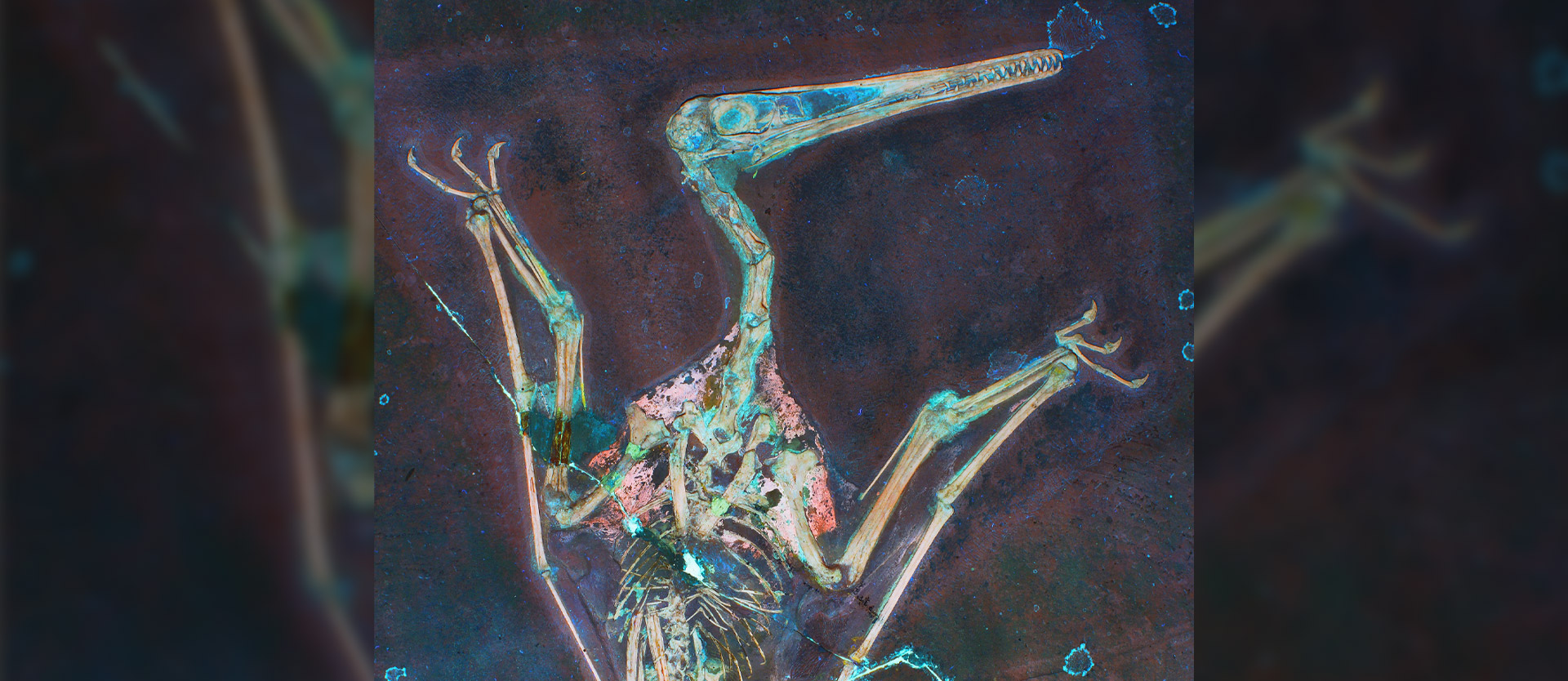
Aerodynamics under laser light

At the beginning of the Jurassic, about 200 million years ago, vertebrates gradually learned to fly. Pterosaurs evolved from reptiles. They were the first vertebrates that are thought to have actively used wings to keep themselves in the air. Their skeletons are still found today. But their soft tissues are hardly preserved. Therefore, many details of pterosaur flight anatomy are unknown.
Now laser light has opened a new chapter in paleontological flight research. Researchers led by Dr. Michael Pittmann, assistant professor at the Department of Earth Sciences & Vertebrate Palaeontology Laboratory at the University of Hong Kong, have used laser-based fluorescence imaging to map the bones and few soft tissue remains of a Jurassic pterosaur fossil, revealing new details about its aerodynamics. To do this, the fossil was scanned with a violet laser. This produced long-term exposures of the pterosaur's bones, as well as its exposed soft tissues.
The results indicate that the pterosaur possessed a wing root fairing. This fairing smooths airflow around the wing-body junction and reduces drag, similar to the wing fairings on most modern aircraft. In birds, the wing root fairing is made of feathers. In bats, the wing root fairing is fur. "We were able to show that pterosaurs had wing root fairings composed primarily of skeletal muscle," explains Luke A. Barlow, a research associate with Dr. Pittman.
"The muscular wing root fairing appears to have provided pterosaurs with additional flight advantages, such as enhanced force generation during wing stroke and sophisticated control of wing shape, including reduction of unwanted vibration or 'flutter," Pittman says. "Our work shows that pterosaurs were more advanced flyers than we thought. And they did so at a time when pterosaurs had just developed the art of flight."
Original publication:
www.pnas.org/content/118/44/e2107631118









